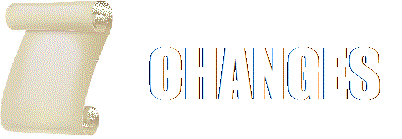(Credit for this guide goes to Hob_Gadling from the official forums)
Contents
Tactical battles[edit]
There are two types of tactical battles. Attacker mostly decides which type of battle will be fought. Understanding the difference is key.
First type is the blowout battle. This is a fight which is so stacked against the defender that attacker can kick him off the map right at the start. Typical setup is one where attacker has high initiative and the defender has low morale. When you can deploy 1750 points worth of troops immediately and have to kill 1000 or less points worth of targets, defense in non-urban maps becomes very hard. You stack the odds by attacking with several groups against one, using strikes and picking on the weak targets. As attacker your objective is to win immediately. Not winning in the first battle is tantamount to failure, and a severe one at that. As defender your objective is to turn the fight into a meatgrinder.
Second type is the meatgrinder. Since you can't stack odds enough in every fight, and sometimes you'll just mess up a blowout, you'll have to fight a lot of these. The purpose of a meatgrinder battle is to take and hold all the reinforcement zones. If you can do that, you win. It's a multi-stage affair over several days and varying objectives at different stages. Recognizing these stages and setting proper objectives is important.
When fighting a meatgrinder as attacker, you want to push the defender off the reinforcement zones and take them with your own CVs. This can be hard to do in one day. The process of assaulting tightly defended reinforcement zones is to capture a 1-point zone close to it and deploy a lot of troops there on the next day. 1-point zones have no other purpose. It is almost always harmful to take and hold them for purposes other than staging zones for the next battle. Attacker must attempt to win the map in as few days as possible, as multiple battles benefit the defender.
When fighting a meatgrinder as defender you want to turn the battle into a string of draws. Low initiative and high morale benefits the defender more. Deny the 1-point zones near your reinforcement routes. You don't have to hold them, but it may be beneficial to have your troops deploy into good defensive positions at start of the next day. Sometimes it is good enough to contest a zone with a CV of your own, to prevent the other side from using it at the next battle.
If you get stuck into a drawn out meatgrinder as attacker, consider sending reinforcements. If none are available, consider retreat. A tank regiment with one initiative is not very useful.
Don't worry too much about your troops. The fight is over ground. Casualties are not meaningful in the short run unless you're fighting a blowout battle, and even then only one side can win via killing enough stuff. Killing more than losing in a meatgrinder is meaningless if you fail to achieve the territorial objectives for the day.
Strategic map[edit]
The strategic level of the campaign is as important as the tactical fights. The aim of attacker should be to decide which battles will be blowouts and fight all of those, while carefully choosing which grinders to engage in. Total War-type strategy of attacking everywhere with everything, every turn, typically benefits the defender more. As attacker you want to phase your offensives and choose your battles. Note that the roles may reverse, as NATO will have to do counter-attacks to plug holes in lines or take back important ground.
Not all battle groups are created equal. Understanding what you can do with the group at hand is important in judging whether the battle will be a blowout or a meatgrinder. Armor regiments are more useful in offensives, but you need high initiative to get the most out of them. Reservists are bad in every way, but you need something to hold the line while your armor rests and refits. Airborne can't attack against tanks, but they can be dropped most everywhere on the map.
You get about one strike per day or one new battlegroup every other day in the largest campaign. These are more effective if you can save up and do several strikes in one turn.
The largest campaign starts with about a dozen battlegroups per side. It is possible to create dents into NATO lines that take 4 battlegroups to hold. As attacker you want to create these dents and force the defender to spread thin. As defender you want to reverse the roles and counter-attack to straighten out the line.
Never give up ground for free if you can still fight. Every day counts.
Usually you are playing for ground. Sometimes it may be beneficial to attempt to surround and completely wipe out enemy battlegroups.
The main issues of playing the campaign seem to be, in no particular order:
- not being aggressive enough on tactical level - attacking too many sectors at once on the strategic map - wearing the battlegroups down to the bone
Incidentally, all of these are problems only to attacker. Every one of these things benefits the defender. Play to the strengths of the attacker and the game looks completely different.
(Credit for this guide goes to Hob_Gadling from the official forums)






